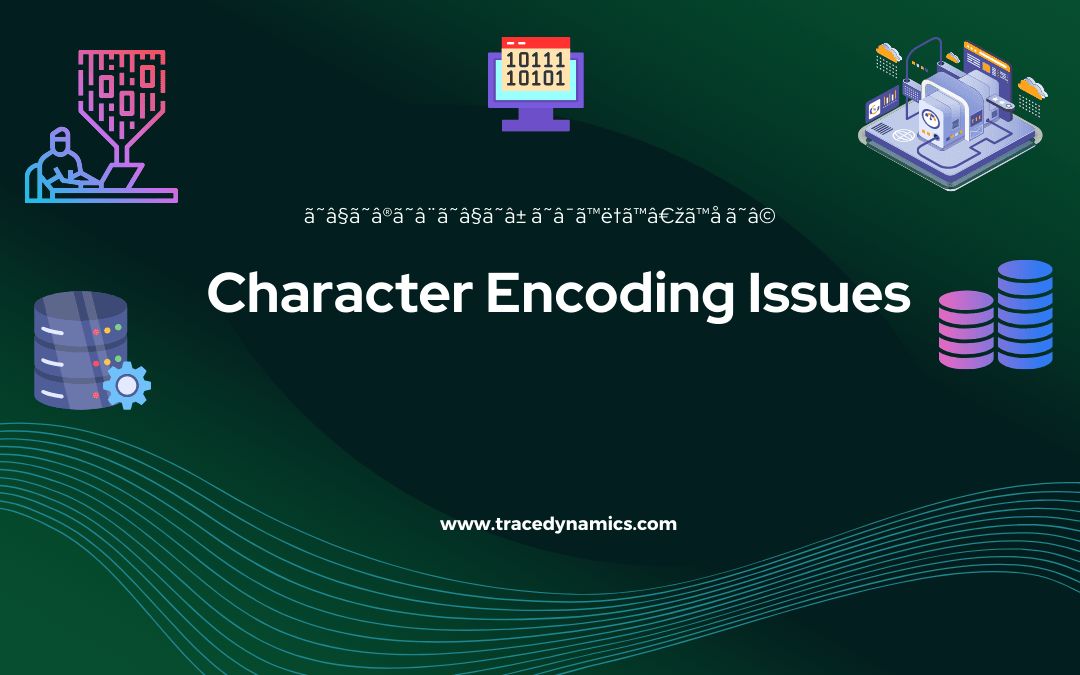ã˜â§ã˜â®ã˜â¨ã˜â§ã˜â± ã˜â¯ã™ë†ã™â€žã™å ã˜â© facing this strange character problem?
In the realm of data handling, character encoding holds a pivotal role ensuring textual data remains intact and legible throughout its lifecycle. However, encoding mismatches can lead to garbled text or strange characters, a common anomaly that often perplexes developers. This article delves into the intricacies of character encoding, drawing insights from community experiences and discussions.
Understanding the Core of Character Encoding
Character encoding is a set of rules that map characters to numbers. It’s the backbone that ensures text remains legible when stored in databases, transferred between systems, or rendered on screens.
The Significance of Correct Encoding
- Data Integrity: Correct encoding preserves the original text, ensuring data integrity.
- Legibility: It ensures text is legible when retrieved or displayed.
- Interoperability: Encoding standards promote interoperability between different systems.
Common Encoding Standards
- ASCII: A 7-bit character encoding standard representing 128 characters.
- ISO-8859-1: A 8-bit character encoding standard representing 256 characters.
- UTF-8: A variable-width character encoding standard capable of encoding all possible characters, or code points, in Unicode.
The Phenomenon of Strange Characters
When character encoding mismatches occur, they often manifest as strange or garbled characters in text. This is a tell-tale sign of encoding discrepancies during data handling.
Common Scenarios
- Database Storage: Incorrect encoding settings in databases can cause text to be stored incorrectly.
- Data Transmission: Encoding mismatches during data transmission can garble text.
- Rendering: Incorrect encoding at the rendering stage can lead to strange characters on the screen.
Decoding the Query
The ã˜â§ã˜â®ã˜â¨ã˜â§ã˜â± ã˜â¯ã™ë†ã™â€žã™å ã˜â© in focus highlights a typical scenario where strange characters appear in database text, hinting at a possible UTF-8 encoding and decoding mismatch.
Community Insights
The community suggests that somewhere in the process of handling text data, a mismatch in UTF-8 encoding and decoding could be the culprit.
Practical Implications
This real-world example underscores the importance of ensuring encoding consistency across all stages of data handling.
Strategies for Tackling Encoding Mismatches
Addressing encoding mismatches necessitates a thorough understanding of the encoding processes involved and a methodical approach to identifying and rectifying the issues.
Database Configuration
- Check Encoding Settings: Ensure the database is configured to use the correct character encoding.
- Use Unicode: If possible, use a Unicode encoding like UTF-8 to accommodate a wide range of characters.
Data Transmission
- Specify Encoding: When transmitting data, specify the encoding being used to avoid mismatches.
- Validation: Validate the encoding at both ends of the transmission to ensure consistency.
Rendering
- Meta Tags: Use meta tags to specify the character encoding in HTML documents.
- Content-Type Headers: Specify the character encoding in the Content-Type headers.
Conclusion
Character encoding mismatches can lead to perplexing scenarios where text data appears as strange characters. By understanding the fundamentals of character encoding and adopting a systematic approach to identifying and addressing encoding issues, developers can ensure data integrity, legibility, and smooth interoperability between systems.
Frequently Asked Questions
1. What causes strange characters like ã˜â§ã˜â®ã˜â¨ã˜â§ã˜â± ã˜â¯ã™ë†ã™â€žã™å ã˜â© to appear in database text?
- Strange characters often appear due to mismatches in character encoding either when storing, transmitting, or rendering text data. This usually happens when the encoding standard used to store the data differs from the one used to read or display the data.
2. How can I prevent encoding mismatches that lead to strange characters in my database text?
- Ensuring consistency in the character encoding standards used across all stages of data handling can prevent encoding mismatches. It’s advisable to use Unicode encodings like UTF-8, specify encoding settings in your database configuration, and also specify the character encoding in HTML documents and data transmission protocols.
3. Are certain databases more prone to character encoding issues?
- Encoding issues can arise in any database if the character encoding settings are not configured correctly or inconsistently handled. However, the ease of configuring and managing encoding settings may vary across different database systems.
4. How can I identify the character encoding used to store text in my database?
- Most databases provide system variables or metadata queries that can be used to check the character encoding settings. You can also use database management tools or consult the documentation of your database system to find out how to check and change character encoding settings.
5. Can encoding mismatches cause data loss or corruption?
- Yes, encoding mismatches can potentially cause data corruption, especially if text data is incorrectly decoded or re-encoded using a different character encoding standard. It’s crucial to address encoding issues promptly to prevent data loss and ensure data integrity.
These FAQs provide a quick insight into common queries and concerns regarding character encoding issues, especially when strange characters appear in database text.

